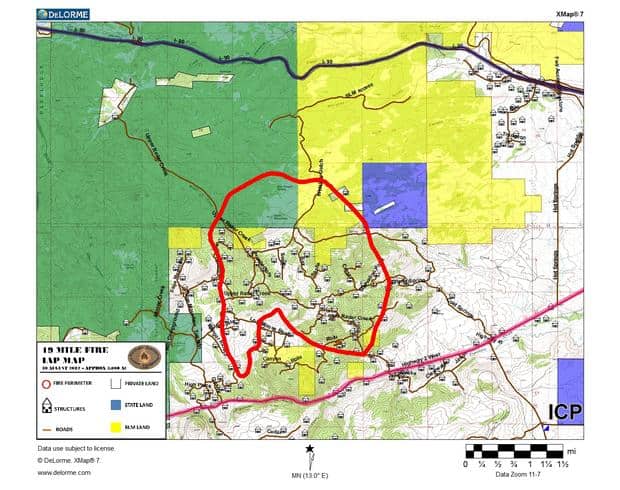Yesterday I wrote about a new study from the Forest Service’s Rocky Mountain Research station, which found that fuel reduction logging and thinning prior to the Fourmile Canyon Fire outside of Boulder, Colorado was ineffective at moderating the fire’s behavior, having had a minimal impact in affecting how the fire burned or the damage it caused.
Below that article from yesterday, frequent commenter Ed made an interesting point worthy of highlighting here:
Some people just refuse to accept the reality of this…that when you get really extreme conditions of humidity, temps, and high winds, there is no power, no planning, no treatment, no nothing that will stop a fire from going where it wants. Nada. I am tired of reading statements from pols (and others who should know better) that “demand this fire be stopped”…. We are now experiencing more and more extreme weather, for whatever reason that none of us are smart enough to explain. We will have to learn to live with these blowup fires, and concentrate our prevention efforts in and around the homes and structures along the forest perimeter.
Well, we know that at least one politician – and their staff – was apparently too busy on the campaign trail to actually have time to read the findings from Forest Service’s Fourmile Fire Report about the fact that fuel reduction logging and thinning had a minimal impact in affecting how the fire burned. This morning I woke up to see Senator Jon Tester (D-Mont) quoted in Montana newspapers with this amazing claim:
This election is about an area between here and Whitehall that is burning. If we could
have gotten my Forest Jobs Act past [sic] we would have been able to cut those trees.
– Senator Jon Tester
It’s worth pointing out that Senator Tester is referring the 19 Mile Wildfire, a 3,000 acre fire, which according to inciweb, is burning in grass, brush and some timber mainly on private lands west of Whitehall, Montana (see official maps below). The cause of the fire is under investigation. Yesterday, the weather at the fire was 97 degrees, 13% humidity and 20 mph winds blowing out of the southwest.
I’m not sure if the Forest Service has an official threshold that needs to be crossed in order for “extreme fire weather conditions” to be met, but suffice to say that temps near 100, humidity in the low teens and winds blowing 20 miles an hour qualify. Once a wildfire gets going under these types of weather conditions any wildfire expert will tell you there’s not much you can do to put the fire out.
But not Senator Tester. Nope, apparently he wants us all to believe that if Congress would have simply passed his mandated logging bill, which calls for a minimum of 5,000 acres of logging on the Beaverhead-Deerlodge National Forest annually for the next fifteen years, that this 19 Mile Wildfire, which has burned mainly on private land (and is burning mainly toward more private land and BLM land) would have prevented this wildfire from either starting and/or spreading. Incredible….


